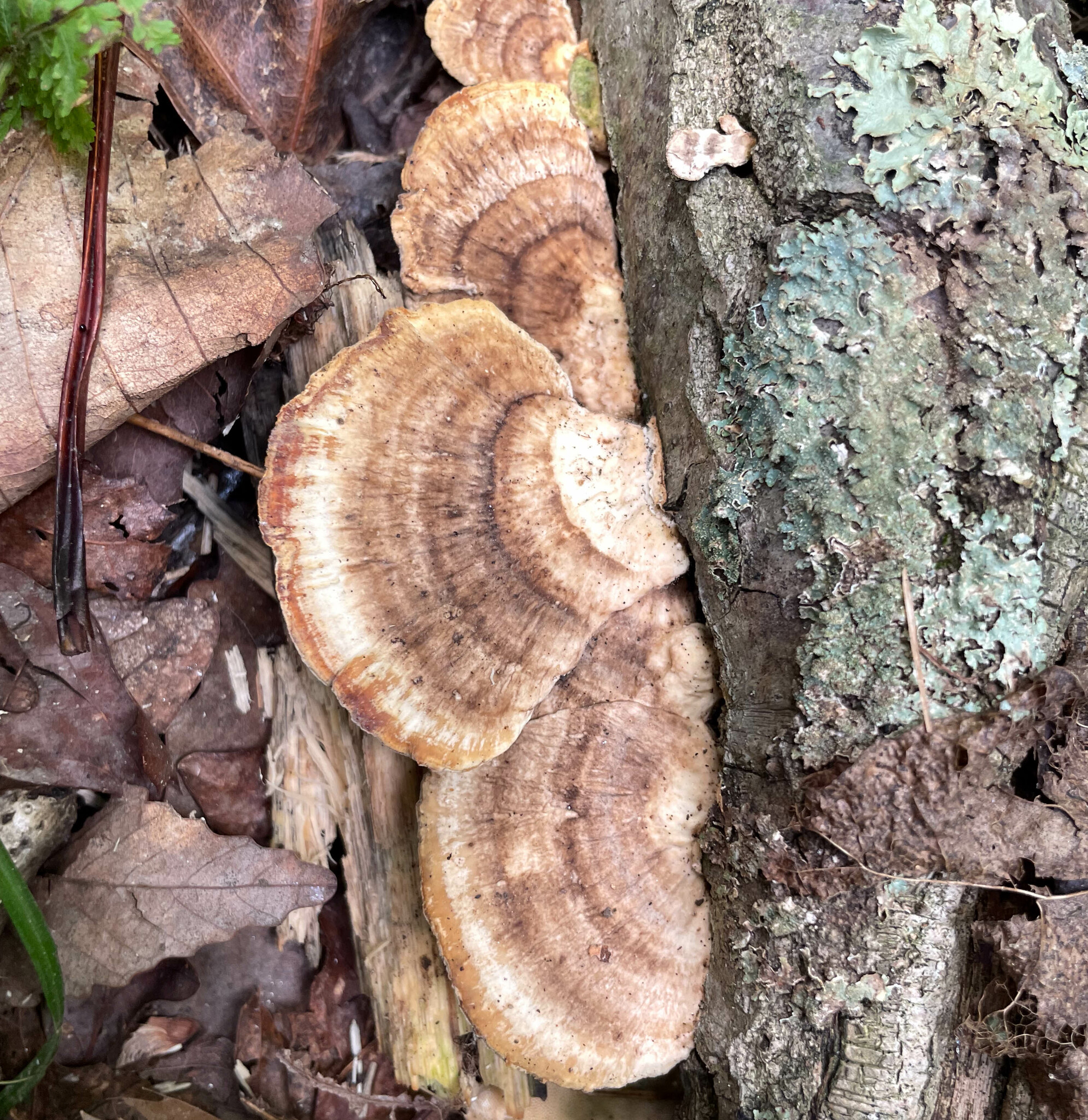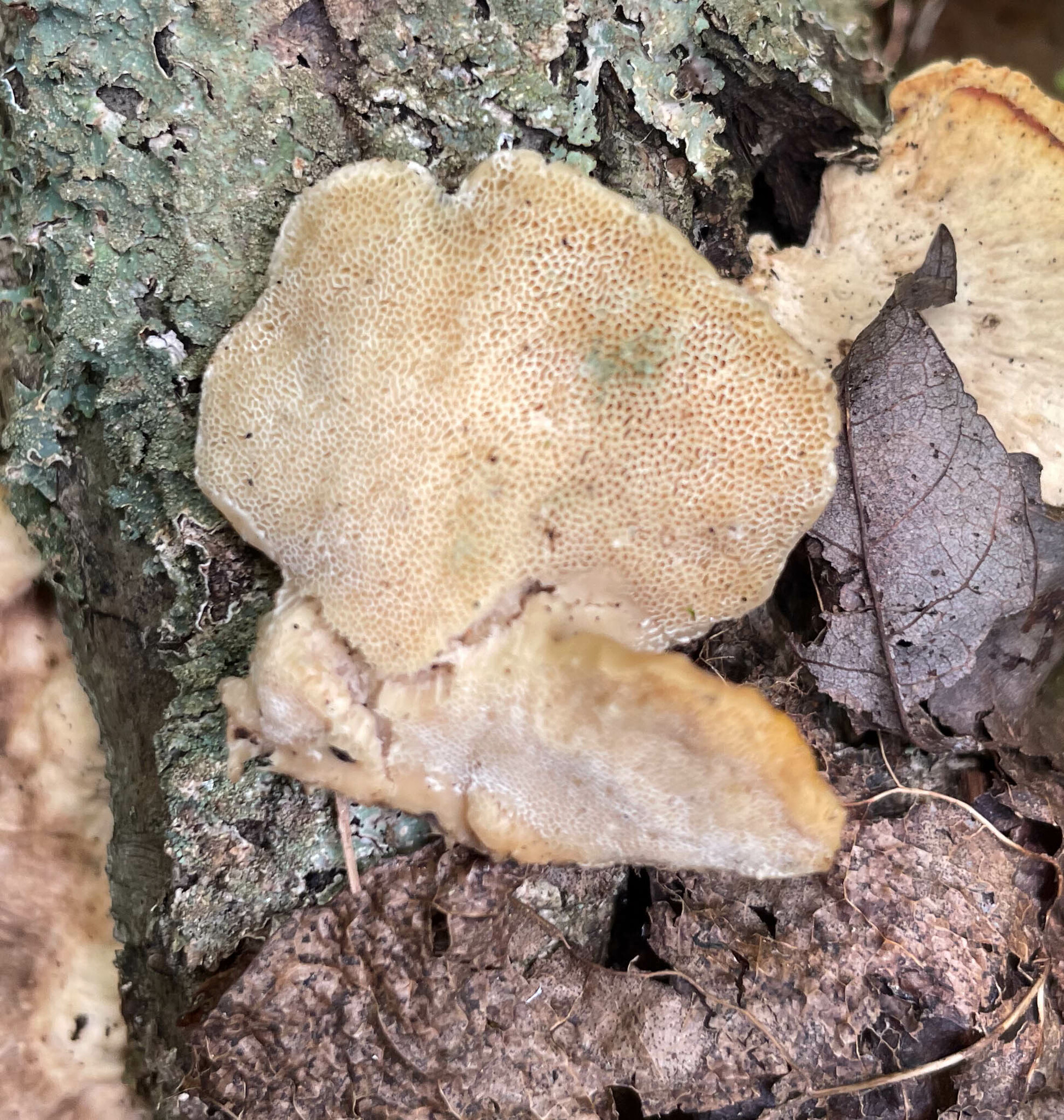Map Snapshot


1 Record
Status
Compare carefully with Trametes hirsuta and Trametes versicolor.
Seasonality Snapshot
Source: Wikipedia
| Trametes pubescens | |
|---|---|

| |
| Scientific classification | |
| Domain: | Eukaryota |
| Kingdom: | Fungi |
| Division: | Basidiomycota |
| Class: | Agaricomycetes |
| Order: | Polyporales |
| Family: | Polyporaceae |
| Genus: | Trametes |
| Species: | T. pubescens
|
| Binomial name | |
| Trametes pubescens | |
| Synonyms | |
| |
Trametes pubescens is a small, thin species of polypore, or bracket fungus. It has a cream-colored, finely velvety cap surface. Unlike most other turkey tail-like species of Trametes, the cap surface lacks strongly contrasting zones of color.
Trametes pubescens is an annual, saprobic fungus, a decomposer of the deadwood of hardwoods, growing in clusters on logs, stumps and downed branches. (It is rarely reported on conifer wood.) It is a purported plant pathogen, infecting peach and nectarine trees.[1] It is inedible.[2]
The genome of T. pubescens has been published in 2017 by Zoraide Granchi and coworkers from the OPTIBIOCAT project.[3] The genome contains 39.7 million bases. The consortium estimates that there are 14,451 different genes, which is quite average among saprobic wood-rotting species. The sequencing has been performed in Leiden, The Netherlands.[4]
References
[edit]- ^ "Trametes pubescens". mushroomexpert.com.
- ^ Phillips, Roger (2010). Mushrooms and Other Fungi of North America. Buffalo, NY: Firefly Books. p. 317. ISBN 978-1-55407-651-2.
- ^ Granchi Z; Peng M; Chi-A-Woeng T; de Vries RP; Hildén K; Mäkelä MR (2017). "Genome Sequence of the Basidiomycete White-Rot Fungus Trametes pubescens FBCC735". Genome Announc. 5 (8): e01643-16. doi:10.1128/genomeA.01643-16. PMC 5323618. PMID 28232439.
- ^ "OPTIBIOCAT partner GenomeScan".

